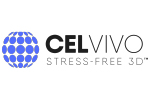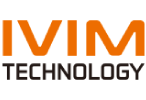Simoa technology is changing the way in which the biology of health and disease is studied by giving researchers the ability to closely examine critical biomarkers.
Automated microscopy and Spatial Proteomics
Automated microscopy and image analysis
Discover
Related topics
Omics Studies of Tumor Cells under Microgravity Conditions

May 6, 2024
It is important for the analysis of data from space experiments to distinguish unspecific stress reactions from...
Column-Free CD14+ Monocyte Isolation using 50nm Superparamagentic Beads on MARS® Bar

Apr 25, 2024
The MARS® Bar Magnetic Separation Platform is a closed and automated isolation for cell therapy development and...
Spatial and temporal profiling of the complement system uncovered novel functions of the alternative

Apr 24, 2024
Mounting evidence implicated the classical complement pathway (CP) in normal brain development, and the pathogenesis of...
The chicken chorioallantoic membrane as a low-cost, high-throughput model for cancer imaging

Apr 4, 2024
Here, we assessed the chicken chorioallantoic membrane (CAM) as an alternative to mice for preclinical cancer imaging...
A microthrombus-driven fixed-point cleaved nanosystem for preventing post-thrombolysis recurrence

Apr 3, 2024
A thrombin-responsive and fixed-point cleaved Fu@pep-CLipo was developed for highly efficient and precise thrombolysis...
Multiplexed tissue imaging using the Orion platform to reveal the Spatial Biology of Cancer

Mar 27, 2024
In this webinar Prof. Sandro Santagata, will reveal how Orion high-plex imaging and the use of this data, is valuable...

Mar 22, 2024
Mission Bio’s Tapestri Tool May Hold the Key to Informing Treatment Options for Multiple Myeloma.
A 19-color single-tube Full Spectrum Flow Cytometry for the detection of Acute Myeloid Leukemia

Mar 13, 2024
This recent publication in Cytometry Part A describes the development and comprehensive workflow of a single-tube,...
18F-labeled somatostatin analogs for somatostatin receptors (SSTRs) targeted PET imaging of NETs

Mar 11, 2024
A novel 18F-radiolabeled somatostatin analogue, [Al18F]NODA-MPAA-HTA, was synthesized and evaluated for positron...
Discover Yokogawa CellVoyager CQ1: Benchtop High-Content Analysis System

Mar 8, 2024
Unlike flow cytometers, the CellVoyager CQ1 confocal quantitative image cytometer does not require pretreatment such as...

Jun 28, 2023
Ninety-three urine–serum pairs in the target group and 10 urine–serum pairs in the control group were measured. The mean absolute concentration ± standard deviation in urine of the target and control groups were 184.7 ± 362.4 pg/ml and 27.3 ± 24.1 pg/ml for GFAP (r =0.3 [Wilcoxon effect size], p =0.007), 17.5 ±38.6 pg/ml and 0.9 ±0.3 pg/ml for NfL (r =0.4, p <0.005), 320.2 ±443.3 pg/ml and 109.6 ±116.8 pg/ml for UCH-L1 (r =0.26, p =0.014), and 219.5 ± 255.8 pg/ml and 21.1 ± 27.1 pg/ml for t-tau (r =0.37, p <0.005), respectively, whereas biomarker–creatinine ratio was significantly different only for NfL (r =0.29, p =0.015) and t-tau (r =0.32, p <0.01). In patients with intact glomerular barrier (ACR < 30mg/g), only NfL in urine was significantly different between the target and control group and showed a significant correlation with the respective serum concentrations (r =0.58 [Pearson’s correlation-coefficient], p <0.005).
All four investigated biomarkers could be measured in urine, with NfL and t-tau showing the strongest effect size after correction for urine dilution. NfL revealed the most accurate relation between serum and urine concentrations in patients with intact kidney function.
Related technologies: Digital biomarker detection
Brand profile
Simoa technology is changing the way in which the biology of health and disease is studied by giving researchers the ability to closely examine critical biomarkers.
More info at:
https://www.quanterix.com/